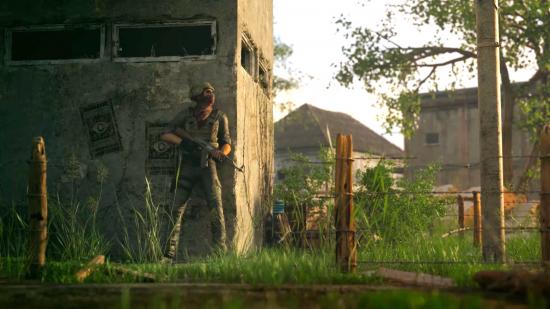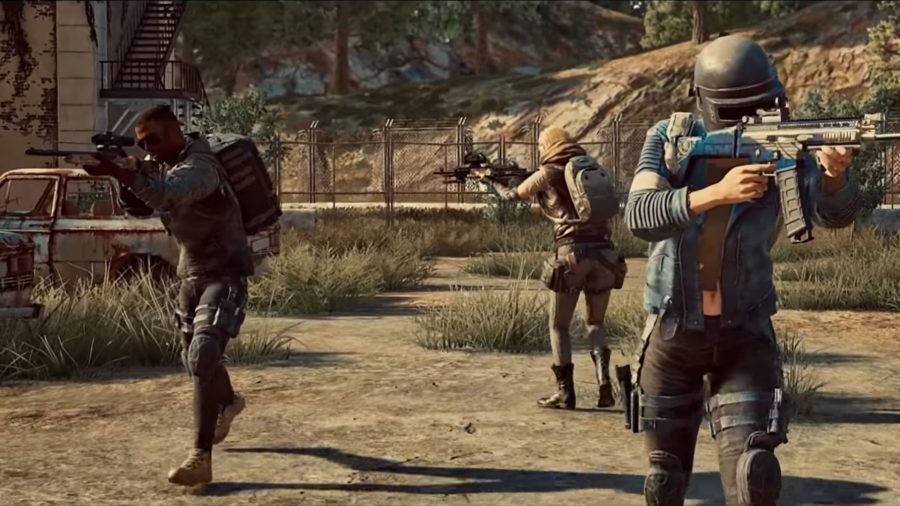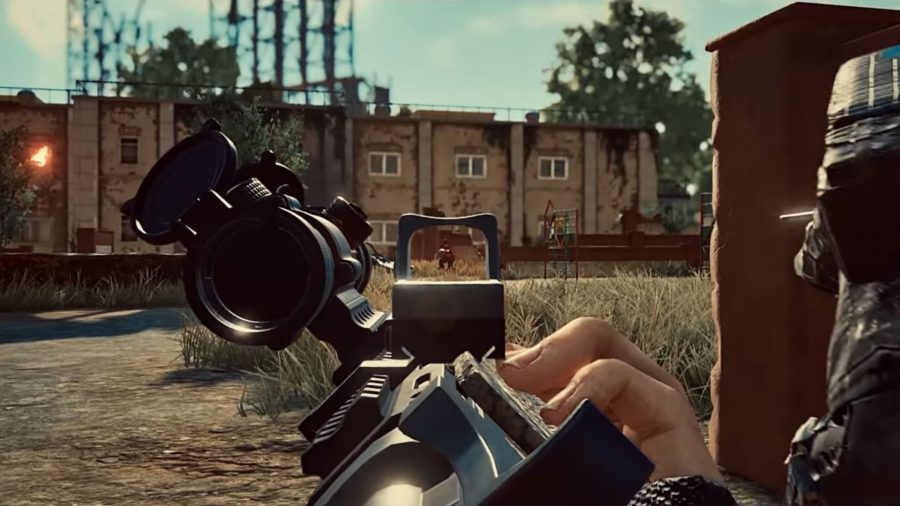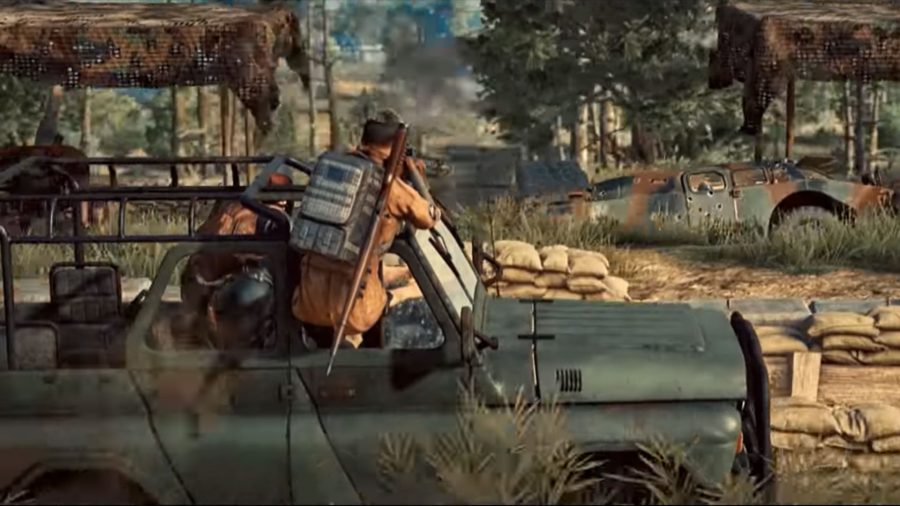PUBG’s meteoric rise in the summer of 2017 spawned a tidal wave of competitors. But while games like Fortnite, Apex Legends, and Call of Duty’s Blackout mean that the spotlight doesn’t shine as brightly on PlayerUnknown’s Battlegrounds as it once did, its developers still have grand plans for the battle royale.
Ahead of the start of PUBG Season 4, which ushers in a new-look version of the game’s original map (as well as introducing lore to the game for the first time), we spoke to Brian Corrigan, studio director at developer PUBG Corp, about the ways in which the studio has tried to set itself apart from the crowd.
As well as addressing the new-look Erangel and the ways in which PUBG has learned from and adapted to its many competitors, Corrigan discusses the future of the game. An emerging narrative is just the start, as new studios and currently unannounced projects mean that PlayerUnknown’s Battlegrounds has the potential to become an IP that’s “much bigger than just the battle royale.”
PCGamesN: PUBG has lore for the first time – why now, and how does it underpin the game?
Brian Corrigan: Yes, lore for the first time in PUBG! It’s something we’re super excited about, we’ve wanted to do it for a long time, and the timing was finally right. The way I think about it is: we have this game, we have these hundred players who drop into these places, and we haven’t told anybody who they are, why they’re doing it, who PlayerUnknown is, or who’s the weird, grey-bearded guy at the end of the trailer. We have all these stories that we want to tell, and we’ve been talking about them for a long time. It just took a while for us to scale up and decide on what it’s going to be, so this is the first little nip of what we’re planning. Definitely keep an eye out for a lot more in the future.
The preview website highlights how certain changes in the map will open up new tactical options. How did you decide on those changes, and what are you looking to accomplish with them?
I would say it’s a mix of a couple different things. One is, again, starting to think about story a little bit, so you could definitely see some story elements reflected on the map. Number two, we now have this really clear vision of what PUBG is as a game: a hard but not hardcore, serious but sometimes funny and weird, high-tension battle royale experience. So when we do play testing internally and on the test server, we want to make sure that anything we do reinforces that experience. It’s a combination of those two things.

Will we see changes or reworks to other maps as well as Erangel?
We’re not publicly committing to anything on that, but the game is a service, and it’s going to always evolve. So I think you’re going to see more evolution of everything. When I look back internally, we talk about the long term all the time. We say: ‘we’re not here for a year, we’re not here for a month, we’re here for a decade, so let’s do it right’. There can’t be any sacred cows, or things we refuse to change. We’ve got to understand the game, we’ve got to understand the players, put the players first, and deliver the game and the story that we want to deliver.
So are we looking at a lasting refinement of Erangel here, or a temporary change for the sake of change?
I don’t think we feel any pressure to change it just to change it. It’s not like, ‘oh, we have to change it to keep it fresh.’ It’s not that. It’s very purposeful. Again, because we want to be – and we feel like we are – this more serious, tactical game, map changes can’t come lightly. There are players who know where every single rock is on every single hill of the game, and when they’re running over that hill they’ve got an exact plan of which rock they’re going to take cover behind. That’s the type of gameplay we have.
So – and we say this all the time – we’ve got to be careful even moving rocks. We really have to think about this kind of stuff. Same thing with introducing ledge grab; we can do it if it adds tactics and more interesting gameplay, but we always need to be careful with any new mechanics to make sure we don’t affect those core values of the game.
So I don’t think we feel any pressure to do it for that reason, but I think games need to evolve, and we have this story we want to tell. And like I said earlier, I think the map is one of the one of the most effective ways we can tell the story. So if we can do it in a way that gets players excited without detracting from the actual game experience, then I think that’s an effective way to do it. We will continue to evolve everything, basically.
Do you risk stagnation as a live game with that approach?
I guess it depends how you look at it – if you think this is the only vehicle to carry the game forward, then maybe, but there’s a lot of other options. I think the best solution is to have this mix – there’s ups and downs to everything, that’s just game design – but it’s about the vision of the game that you want to build, and at this point, we have a very refined vision of what we’re trying to do.
There’s no technical reason we couldn’t blow up parts of the map and put all kinds of stuff on there. We could do anything we wanted to, but that’s not the game we’re building. We understand the game well enough now to know that type of thing would have been a huge mistake. The fact you’re seeing a lot of refinement and improvement is a reflection of our internal thinking about the future of the game. We understand that our appeal, and what we’re focused on, is being a more serious version of BR. That’s the experience. And you’re starting to see the game evolve more frequently because the company’s scaled up over time to be able to finally do that.
How has that been felt internally?
I guess I would say it’s kind of what you’d expect: we started with this small team – and anybody in the whole industry would say the same thing – this is the one you dream of, you know? Once in your life, to be able to work on something like this.
What’s evolved over time is our understanding of what we ourselves have built. What you’re seeing now, with the company changes, is kind of a reaction to that. With the lore, for example, it’s like, ‘gee, it turns out we have this bigger story that we want to tell, how are we going to do that?’ Or with the Erangel redesign, for a lot of us internally it’s an acknowledgement of the growth and the change of the company, because we’re going back and we’re updating this thing we created in the early days that, if we had the resources we have now, would have looked a lot different. We have a better understanding of the game we’re building, and of the community, and of where we want to go in the future – of the direction the compass is pointing.
We’ve also seen a lot about the cost of that more frequent update schedule, with reports of crunch at Epic. What’s been your approach to that as you consider the update schedule?
It’s been a learning experience. If I’m being honest, speaking as kind of an insider, last fall – and I said this before, publicly – but we were trying for this weekly update cadence. And it was one of those things where a bunch of us were like, look, we want to improve things as fast as possible. There’s some stuff that drives us crazy as players, and who’s going to fix it? Us! We’re the developers, we’ve got to go fix it, just because we ourselves want to play the fixed version.
So we tried to crank out these patches on a weekly cycle last year, and it just really didn’t work out. If you’ve been on this side of game development before, that’s a pretty hard pace to keep to. So we slowed it down a little this year, and we’ve been doing smaller patches every month, and a bigger season schedule. Our CEO, [Chang Han Kim, aka] CH, he sat everybody down at the beginning of the year, and said: ‘Look, we know what we’re trying to build. There’s no pressure from me to do a bad job at it. I want you guys to do the best job you can.’ And I think what you’re seeing is a reflection of that organisational view.
Fortnite has pioneered the battle royale seasonal update model. You’ve mentioned more considered map changes – are there any other specific points of difference you’d highlight between your model and theirs?
When [PUBG] first came out – years ago now, I guess – the idea was to just sell a copy of the game, and it’s going to be great, and that’s that. A lot of the season stuff has been our internal thinking evolving over time. People have this idea that there’s some animosity or something with Epic, but they’re one of our best partners, we talk to them all the time! And while I think we can learn a little bit from how that’s working over there, just like all games learn from each other, I don’t think their model exactly works for us.
We have a more high-intensity competitive game, we’ve got a functional esports programme that we’re putting a lot of time into right now. I think maybe the way seasons will work for us is probably going to be a little bit different going forward, but I don’t think we’ve really worked out all the details yet, to be honest. I guess what I’m trying to say is, it’s not like we’re taking the blueprint over there and trying to build a better photocopier. That’s not it. If there’s pieces that work for us, that’s great, because we should learn from the best teachers across a lot of different games, but our formula is unique. That’s something we understand, and we have to always remember: this PUBG formula is unique, there really is nothing else out there like it.
You mention a better understanding of the community – are there any community wishlist items you’re looking to add in the future that you’d like to highlight?
I think there’s a lot of improvements that we will probably make to the general social experience in the future. I can’t really commit to anything specific, because it’s still being discussed, but there’s a lot we can do there that’s unique to PUBG.
And then I guess, maybe my larger personal mission: I think as a company we’ve been kind of misunderstood over the past year, because we haven’t been able to do as good of a job as we should, as we owe our players, at just communicating – not only about the things that we did, but the things that we’re planning, and honestly, the things we’re dreaming about, right? Like, this is my life, I love what I do, I dream about this game all the time – usually, I get the chickens.
Even in the past, we didn’t really do as good a job as we could have, communicating some of the reasons why we did what we did. So I think if people are engaged in the community and paying attention, they’re seeing a really different voice of the company this year. I hope they’re seeing that, because we’re trying to make sure that we’re doing a better job. We’re a very humble, hard working, thoughtful company, and we really care a lot about our players – it’s all we talk about all the time. But we had a hard time finding our voice.
It’s interesting to hear you want to talk more about stuff that you’re thinking of in the longer term – promising exciting features too early and then under delivering on them has caused more than one community outcry that we can think of.
It’s a fine line. You’re totally right, we can’t go talking about features that we haven’t committed to internally – that’s not a good idea, because some portion of the playerbase gets excited, and then feels alienated [if it doesn’t happen]. But there’s another approach; once we have committed to doing something, a whole lot of design and internal discussion goes into that feature, and some of those I think are appropriate to share with the community so they can contextualise things, because this is their game, too. And sometimes – well, actually, all the time – a lot of really valuable feedback comes back.
There’s a thing in design development that nobody wants design by committee, because usually you get the lowest common denominator of everything, and that’s not a good idea. But you also want to share intent, I guess, and explain why things sometimes are the way they are. Hopefully people are seeing us do a bit of a better job on that – this year we’ve started to do more detailed patch notes, we started to have these dev letters coming out. Some of us, including me, are trying to do more community podcasts and interviews, things like that, and just, you know, tell people: ‘we’re human, and we care about the game as much as you.’



